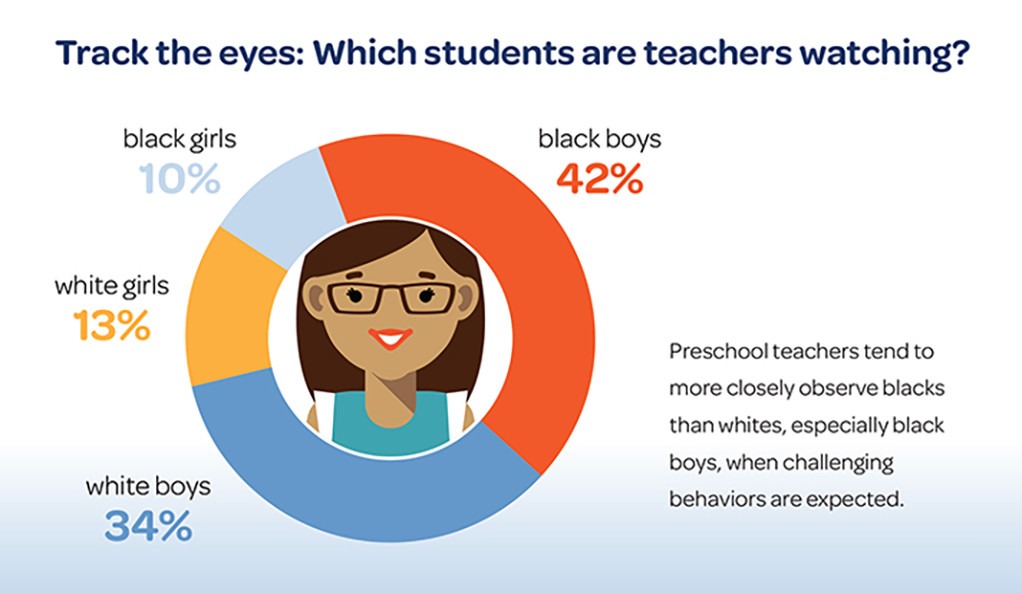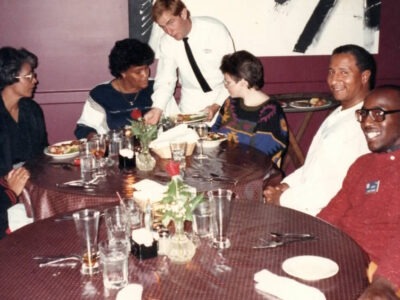IN BRIEF
- Biases are inherent and natural attributes that all humans possess, reinforced by everyday interactions and media. Implicit bias is an unconscious, involuntary prejudice against a thing, person or group.
- Researchers at Yale University found preschool teachers and staff show signs of implicit bias when administering discipline and that the race of the teacher plays a role in the outcome.
- The W.K. Kellogg Foundation provided funding for the development of this research.
WHY THIS MATTERS
Are unconscious prejudices affecting the ways teachers educate and discipline our children in early childhood classrooms? Yale University researchers say yes.
In recent years, there has been a staggering increase in educators administering expulsions and suspensions to preschool students and, more specifically, an increase of expulsions among Black boys. In 2016, a team of researchers at the Yale University Child Study Center tested any underlying causes and reasons to these disciplinary actions.
Through the use of sophisticated eye-tracking technology and standardized vignette testing, researchers examined the potential role of a teacher’s implicit biases as a partial explanation for disparities in preschool suspensions and expulsions. In the Yale University report, “Do Early Educators’ Implicit Biases Regarding Sex and Race Relate to Behavior Expectations and Recommendations of Preschool Expulsions and Suspensions?”, researchers recruited early educators as participants and asked them to complete two tasks.

Task 1
Researchers showed participants a video of preschoolers and asked participants to indicate when they saw the risk for a potential behavior problem. Researchers primed participants with knowledge that we often observe challenging behavior before it becomes a problem even though the video did not contain any challenging behaviors. Through eye-tracking software, researchers monitored participants’ eye gazes toward the children, balancing the sex and race of the children in the study.
Task 2
Participants read a standardized vignette of a preschooler with challenging behavior and received a randomized vignette with the child’s name implying either a Black boy (DeShawn), Black girl (LaToya), White boy (Jake) or White girl (Emily). Participants also received brief, randomized contextual information that detailed the child’s home environment to understand whether knowledge of family background might influence the teachers’ perception of challenging behaviors or implicit biases.
The results?
Findings revealed that teachers gazed longer at Black children, especially Black boys, when expecting challenging behaviors from students.
Findings also found when the preschool teacher and child were of the same race, contextual background information led to increased teacher empathy and a decrease in severity of the observed behavior. However, when the teacher and child were of a different race, the same information seemed to overwhelm the teachers and, therefore, behaviors seemed more severe.
To ensure children thrive, the W.K. Kellogg Foundation focuses on improving access to high quality, early childhood education and education systems, where families are engaged in schools and practices are rooted in a community’s cultures and languages. Identifying and addressing racial bias in education is critical to the success of all children.
"The tendency to base classroom observation on the gender and race of the child may explain in part why those children are more frequently identified as misbehaving and hence why there is a racial disparity in discipline."
Walter S. Gilliam, director of The Edward Zigler Center in Child Development and Social Policy and associate professor of child psychiatry and psychology at the Yale Child Study Center. Tweet
The Opportunity
All of us have biases. They form through everyday interactions and exposure to media. Discover your own implicit biases. Cultivating empathy for each other, especially those of us experiencing disparities, can help reduce negative biases.





Comments